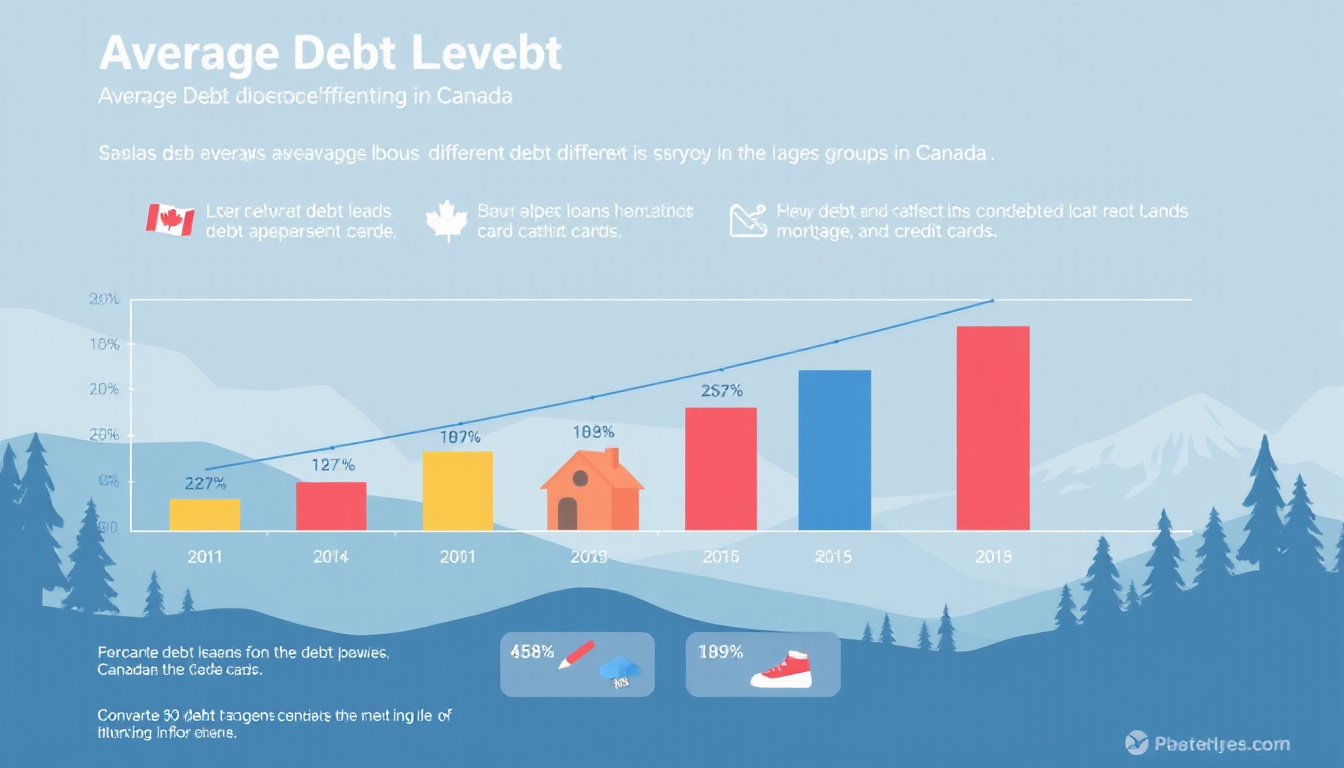In 2023, the average debt by age group in Canada reveals significant financial challenges across various demographics. Current statistics indicate that Canadians aged 35 to 44 years hold an average debt of approximately $47,000, which is a critical figure for understanding the financial landscape of the nation. This statistic highlights the growing financial burden many Canadians face, with several age groups displaying alarming levels of debt that warrant further examination.
Following this core statistic, we will delve into a comprehensive overview of average debt in Canada, breaking it down by specific age demographics. We’ll explore trends and changes in debt levels over time and provide practical strategies for managing debt tailored to each age group. Key data sources, including Statistics Canada and household finance studies, will support our analysis, offering journalists and bloggers reliable insights into the state of debt in Canada.

Key Takeaways
- Average debt levels vary significantly across different age groups in Canada.
- Younger Canadians typically carry more student loan and credit card debt compared to older generations.
- Debt trends in Canada reveal a gradual increase in consumer debt over the years.
- Older age groups often face mortgage-related debt, impacting their financial stability in retirement.
- Effective debt management strategies differ by age group, reflecting unique financial challenges and goals.
Overview of Average Debt in Canada
As of 2023, the average debt in Canada varies significantly across different age groups, highlighting the financial challenges faced by Canadians at various life stages. According to Statistics Canada, the average debt per Canadian household is approximately $73,000. When breaking this down by age group, individuals aged 25-34 carry an average debt of about $43,000, primarily due to student loans and first-time home purchases. Those aged 35-44 see an average increase to around $90,000, driven largely by mortgages and family-related expenses. Meanwhile, Canadians aged 45-54 average about $120,000 in debt, often due to higher mortgage balances and other financial commitments. It’s important to note that these figures reflect the growing trend of indebtedness across generations, underscoring the need for financial literacy and debt relief options tailored to these diverse age demographics.
Debt by Age Group: A Detailed Breakdown
As of 2022, the average debt by age group in Canada shows a stark contrast across different demographics. According to Statistics Canada, the average debt load for Canadians aged 18-34 stands at approximately $22,000. In comparison, those aged 35-54 carry a more significant burden, with an average debt of about $43,000. Interestingly, Canadians aged 55-64 see their average debt fall to around $30,000, while those aged 65 and older manage to keep their debts lower at approximately $18,000. This disparity highlights the financial challenges faced by younger Canadians, particularly as they navigate student loans and housing costs. For more comprehensive insights, the Bank of Canada outlines that rising interest rates could further strain the finances of these age groups, emphasizing the need for effective debt relief strategies.
‘The greatest mistake you can make in life is to be continually fearing you will make one.’ – Elbert Hubbard

Trends and Changes in Debt Over Time
In 2023, the average debt by age group in Canada shows a marked disparity across different demographics. According to Statistics Canada, the average debt for Canadians aged 18-34 stands at approximately $24,000, which includes student loans and credit card debt. As individuals enter their prime working years, those aged 35-44 see an increase in average debt to about $58,000, primarily due to mortgages and family-related expenses. In the 45-54 age group, average debt continues to grow, reaching approximately $80,000, often resulting from mortgage responsibilities. Interestingly, for Canadians aged 55 and older, the average debt decreases to around $35,000 as many work towards paying off their homes. This trend illustrates not only the burden of debt across various stages of life but also highlights shifts in financial responsibilities as Canadians age. Understanding these statistics is crucial for policy-makers and financial advisors aiming to address the debt challenges faced by different age groups in Canada.
Strategies for Managing Debt by Age Group
In Canada, the average debt by age group reveals significant trends that highlight the financial challenges faced by different demographics. As of 2023, Canadians aged 25-34 carry an average debt of approximately $38,000, while those aged 35-44 average around $63,000 in debt. The statistics show that older Canadians, specifically those aged 55-64, hold an average debt of about $37,000. These figures show that while younger Canadians may start with lower debt levels, it often increases with age due to factors such as mortgages and family expenses. According to the Canadian Broadcasting Corporation (CBC), the rising cost of living and the increased reliance on credit are contributing to these growing debt levels across all age groups. Understanding these patterns is crucial for developing effective debt management strategies tailored to each age group’s unique financial landscape.
